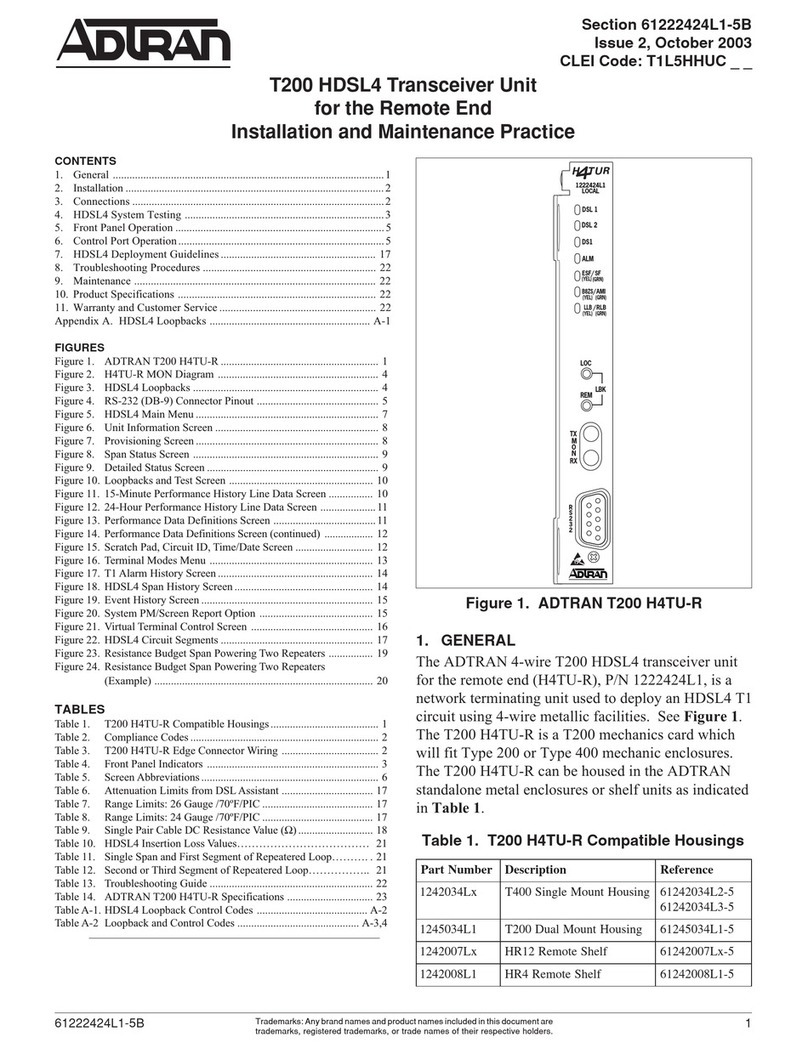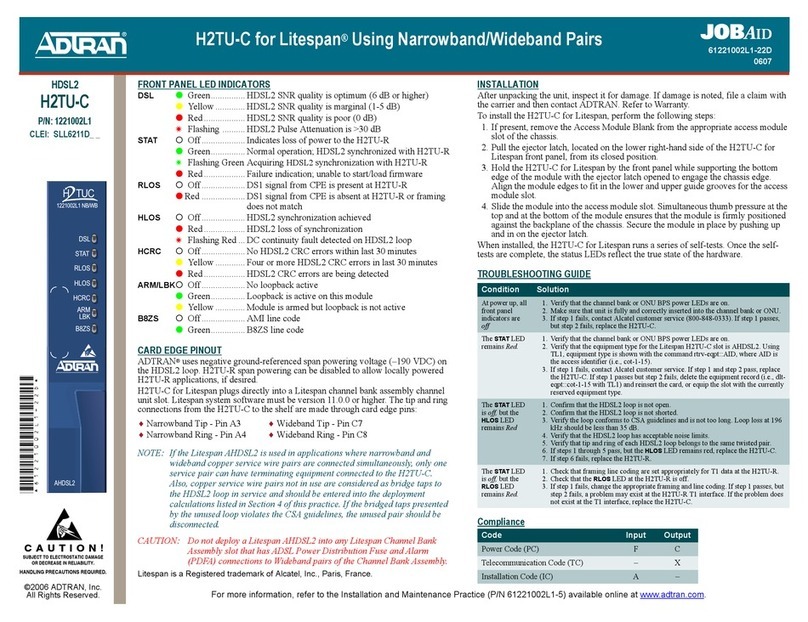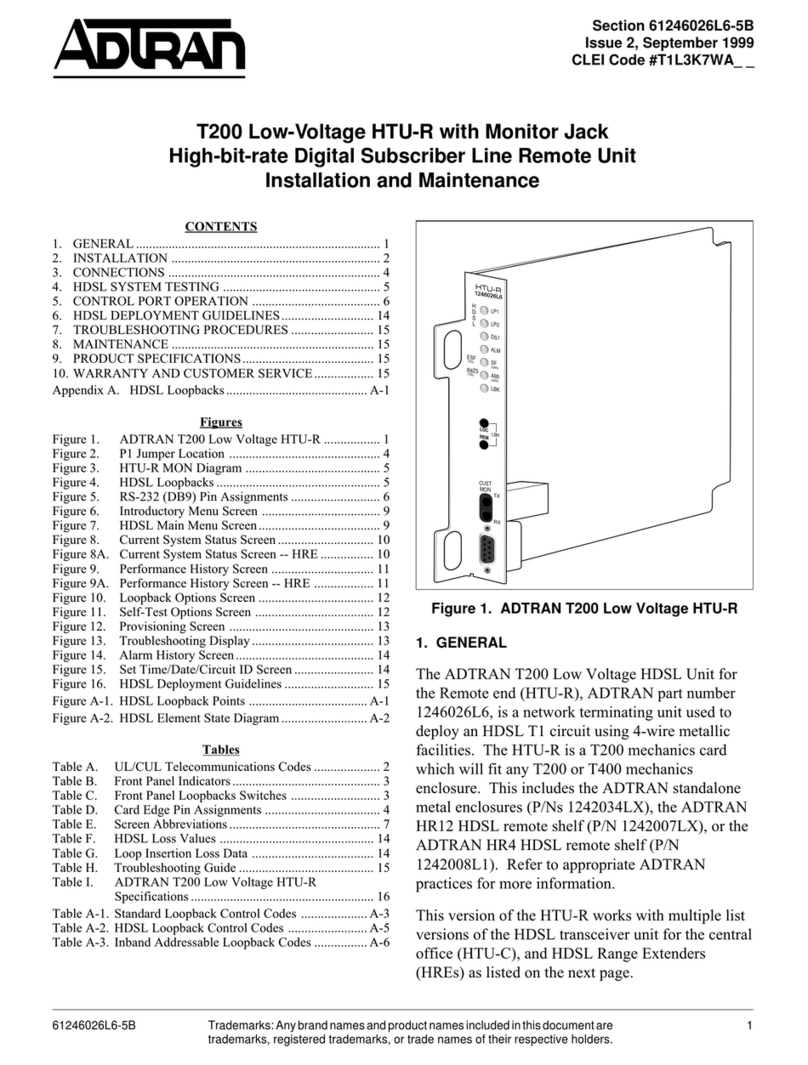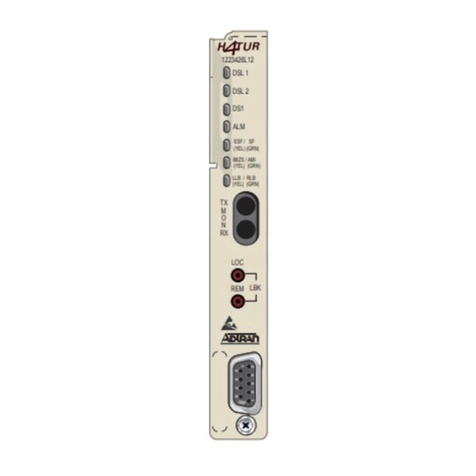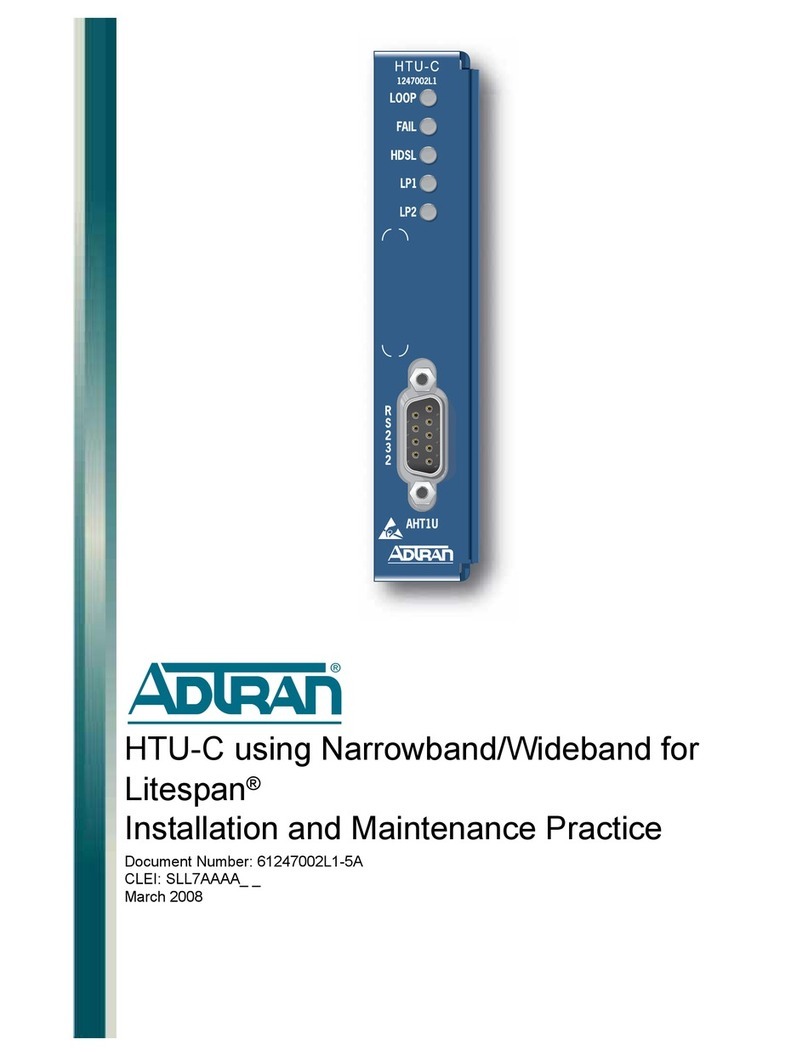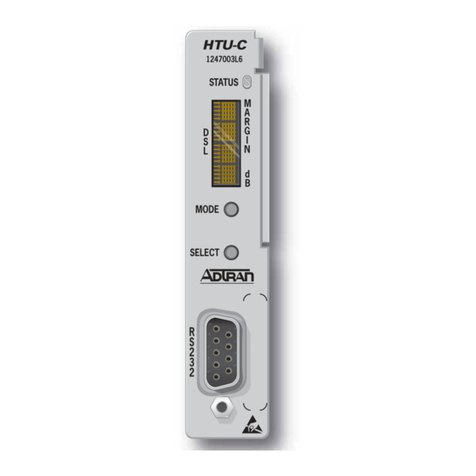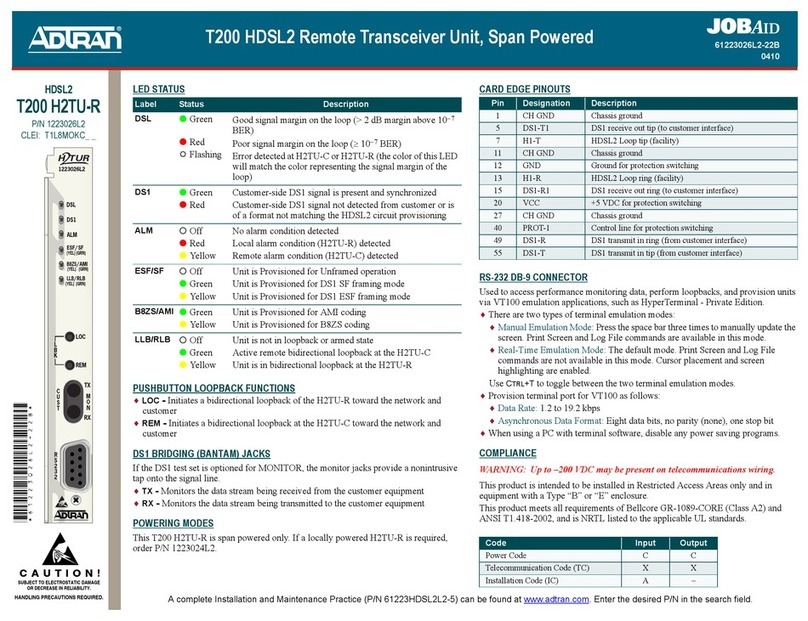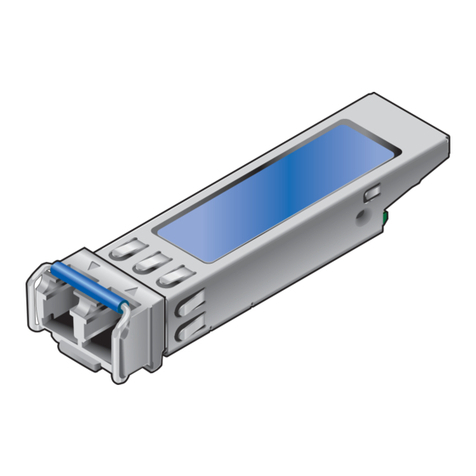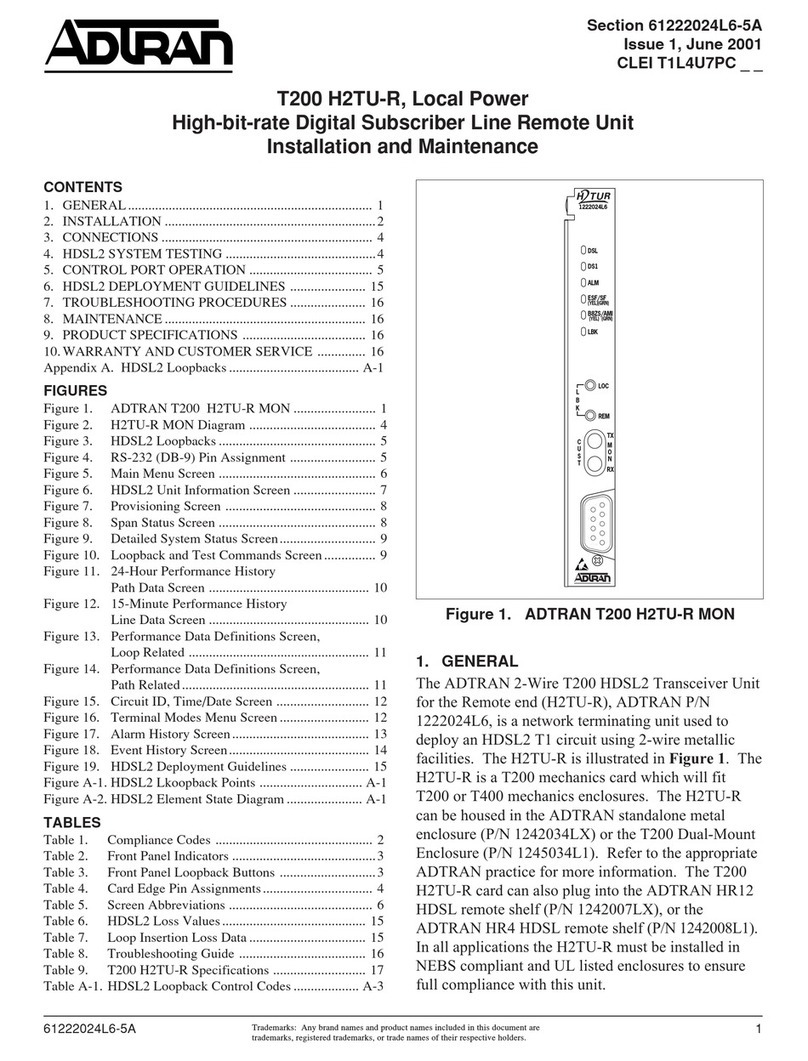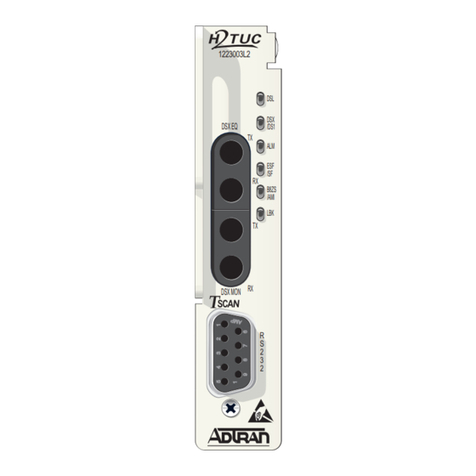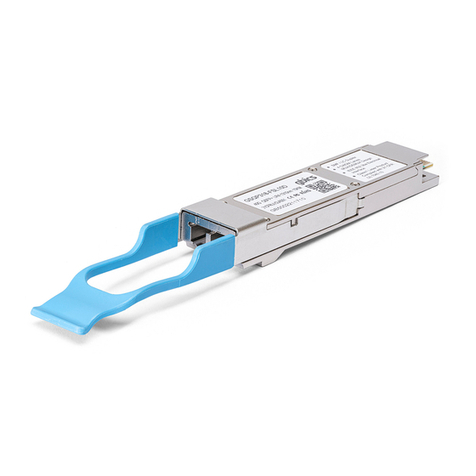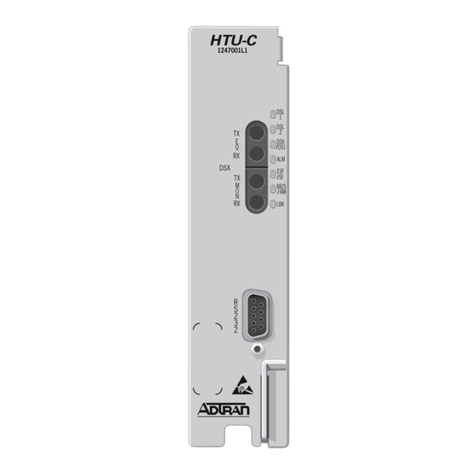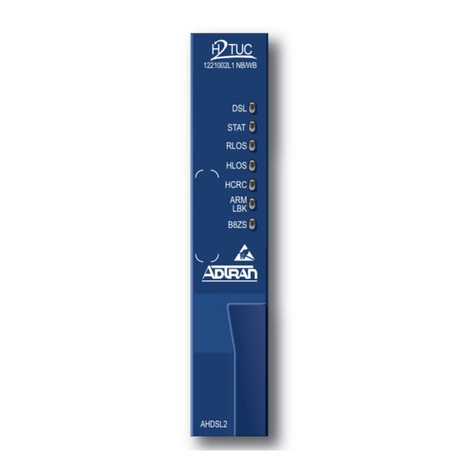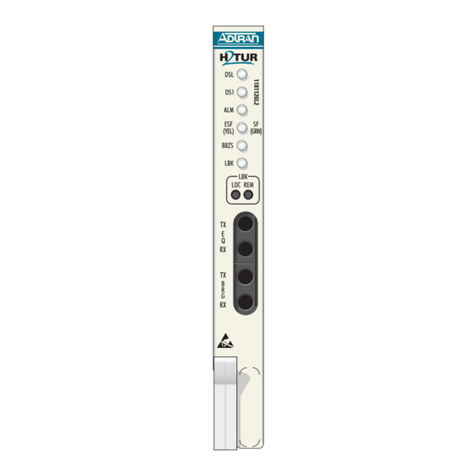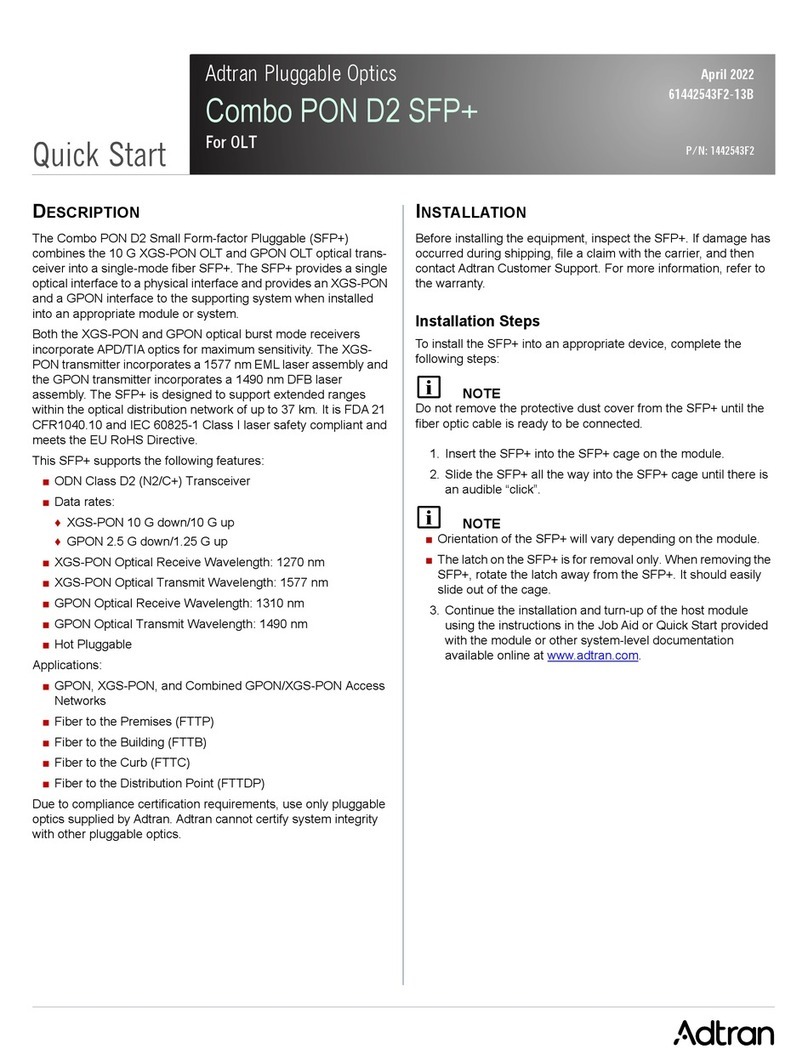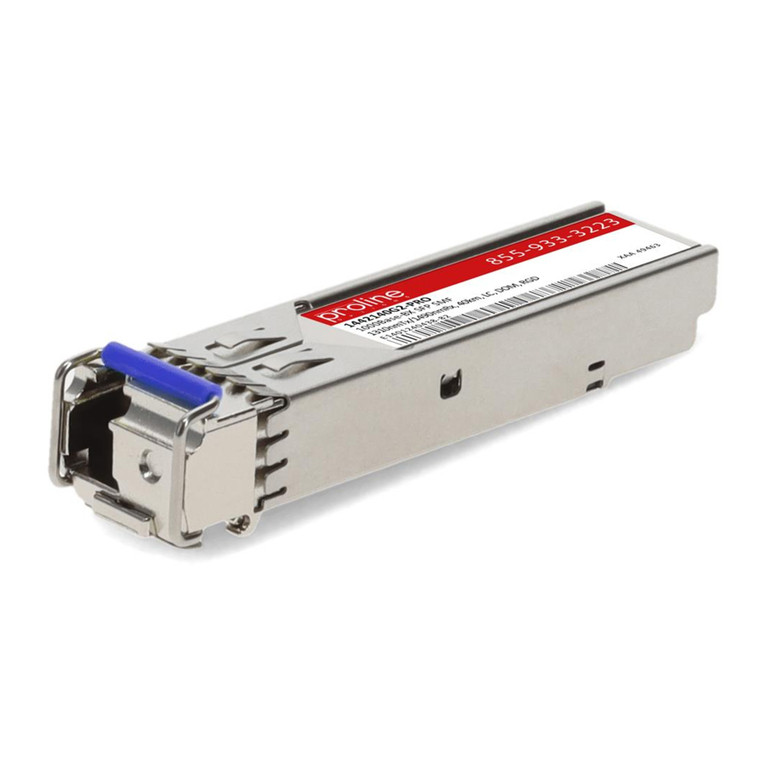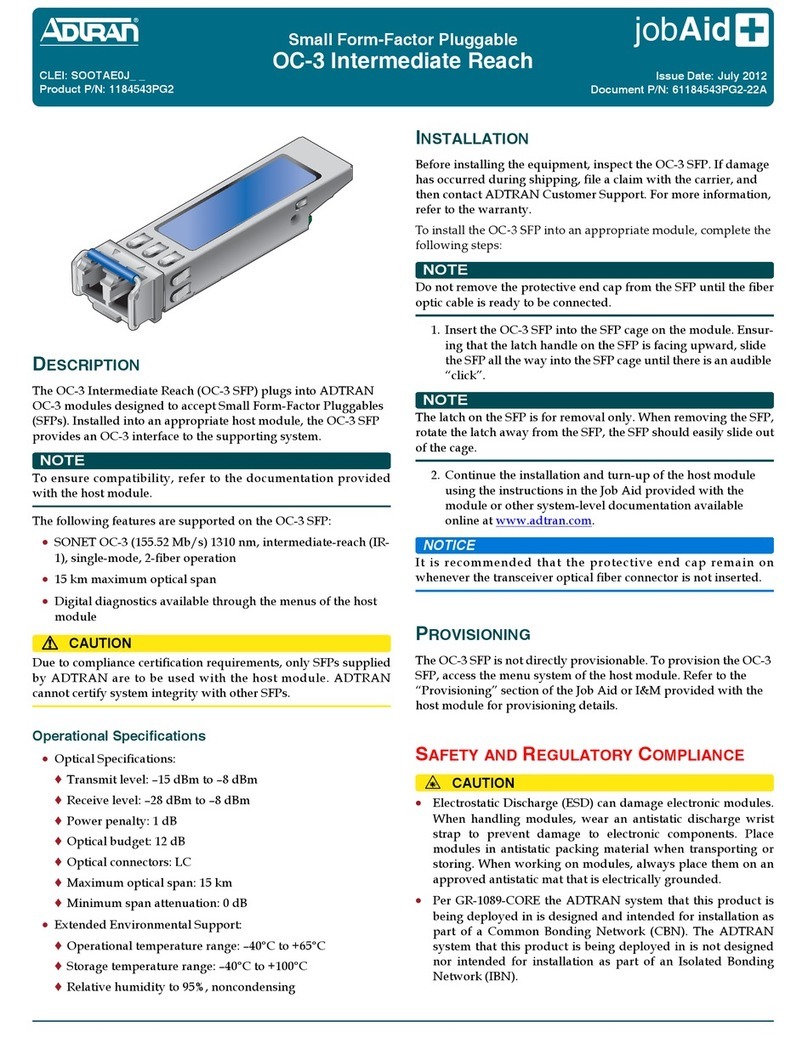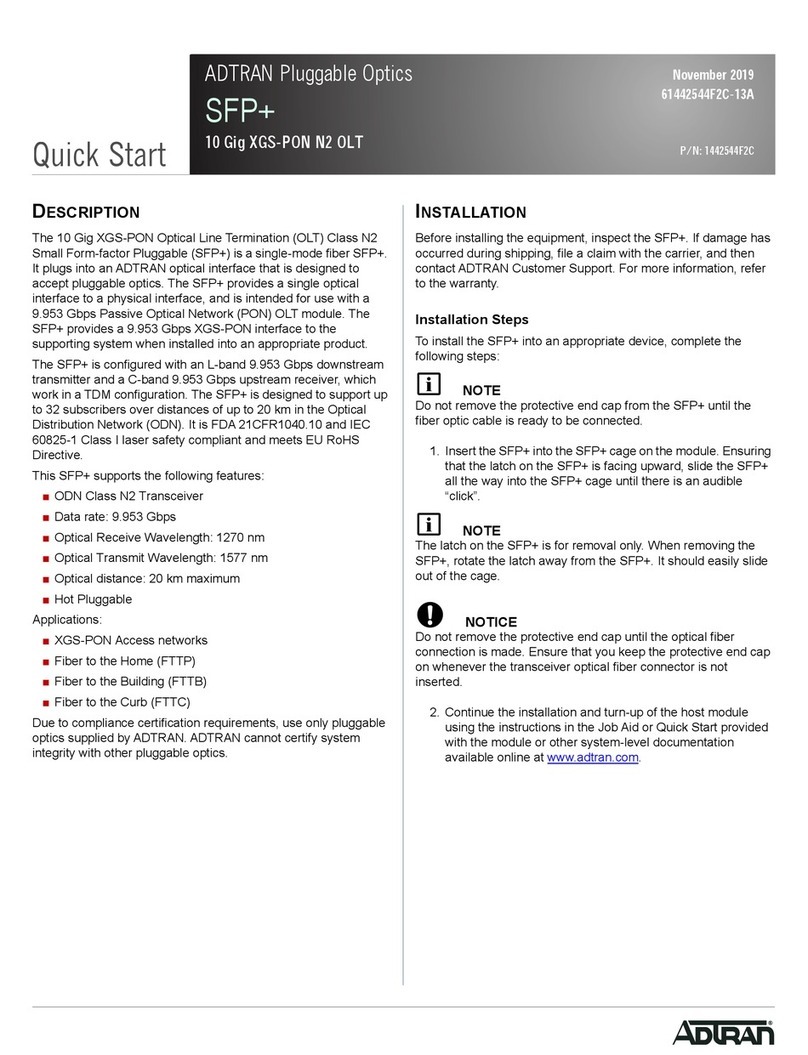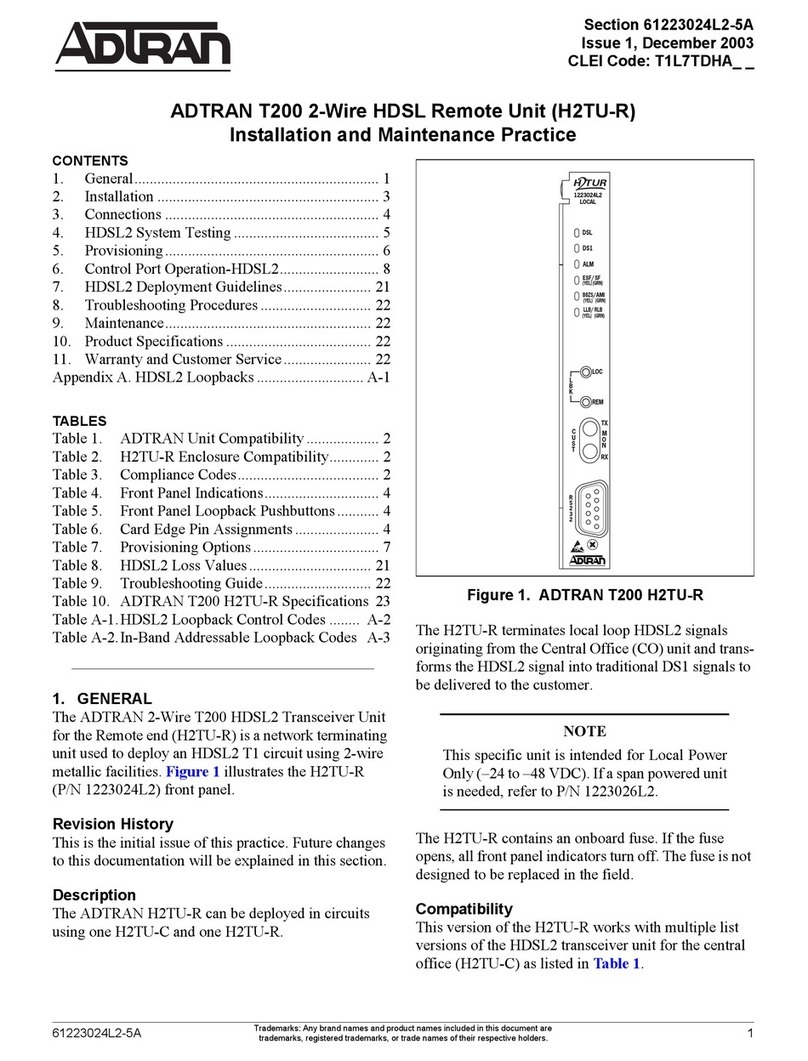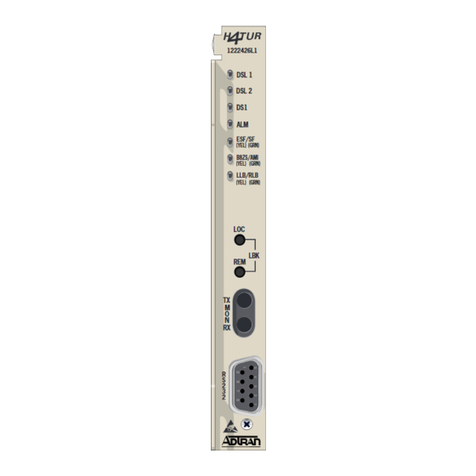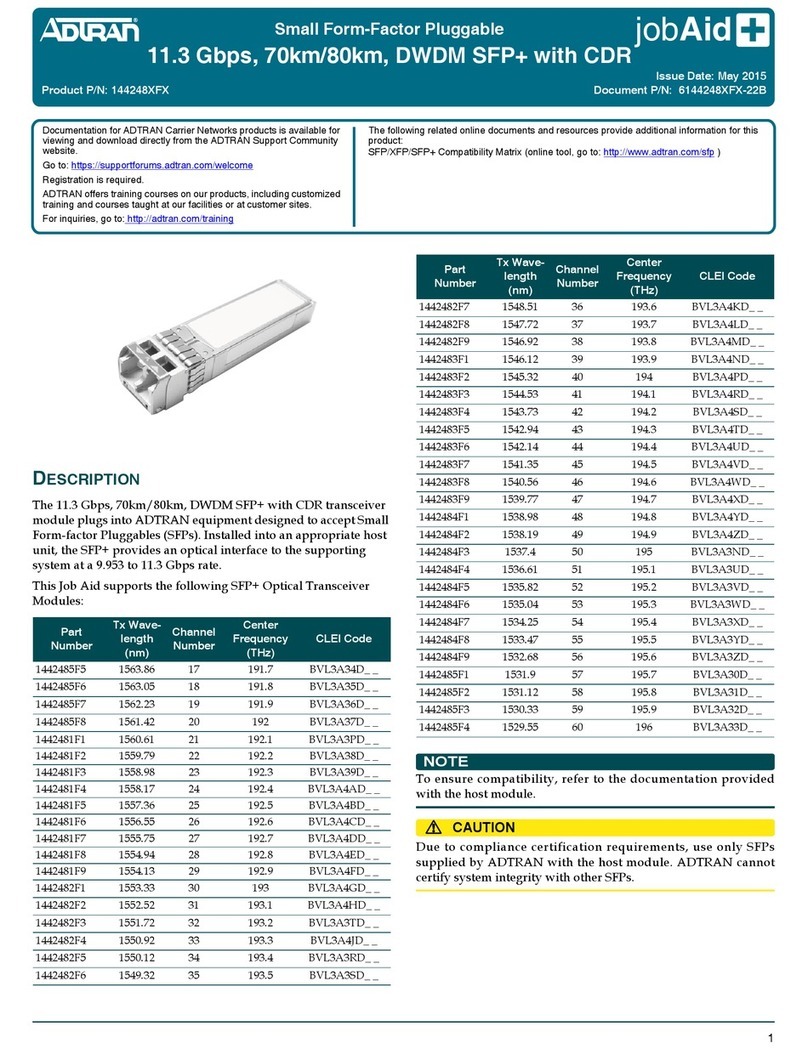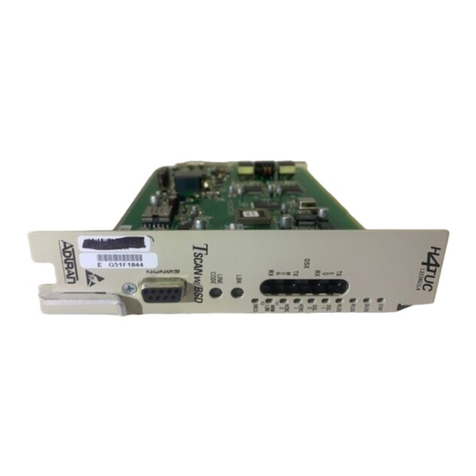
8 Section 61245004L6-5, Issue 4 61245004L6-5D
The screens illustrated in Figures 8 through 16 are for
an HDSL circuit deployed with ADTRAN’s Low
Voltage HDSL technology. The circuit includes an
HTU-C, HTU-R, and HRE. This scenario was chosen
for inclusiveness of functionality. However, other
configurations are possible and their displays will vary
slightly from those shown in this section.
A terminal session is initiated by entering multiple
space bar characters, which are used by the HTU-C to
determine the speed of the terminal. Once the speed
has been determined, an Introductory Menu is
presented, as illustrated in Figure 8.
From the Introductory Menu, the Main Menu may be
selected. The Main Menu provides access to detailed
performance and configuration information, as
illustrated in Figure 9, HDSL Main Menu Screen.
From the Main Menu, the following screens can be
accessed.
1. Current System Status
2. Performance History
3. ADTRAN Information
4. Loopback Options
5. Self-Test
6. Provisioning
7. Troubleshooting
8. Set Time/Date/Circuit ID
The Current System Status screen, illustrated in
Figure 10, provides quick access to status information
for both the HTU-C and HTU-R. Type “H” once to
view the HRE Current System Status screen for the
HRE #1; type “H” a second time to view the Current
System Status screen for HRE #2. The HRE Current
System Status screen is illustrated in Figure 10A.
At each 15-minute interval, the performance
information is transferred to the 15-minute
performance data register accessed from the
Performance History screen. This unit supports the
display of performance information in 15-minute
increments for the last 24-hour period. At each 24-
hour interval, the performance data is transferred into
the 24-hour performance data register also accessed
using the Performance History screen, illustrated in
Figure 11. Type “H” once to view the Performance
History screen for HRE #1; type “H” a second time to
view the HRE Performance History screen for HRE
#2. The HRE Performance History screen is
illustrated in Figure 11A.
Type the letter “Z” at the Current System Status
screen in order to reset the current performance
registers to zero on both the Current System Status
and Performance History screens.
Figures 10 and 10A consolidate current information
for the HDSL, DSX-1, and DS1 interfaces. A key to
the information provided is found in the center of the
screen. Arrows indicate the key applies to both the
HTU-C and HTU-R.
LOSS ................. Pulse Attenuation Measurement 3
SYNC ................ HDSL Loop 1 and Loop 2 Sync
Status
ES 15M/24H ..... Errored Seconds 4
SES 15M/24H ... Severely Errored Seconds 4
UAS 15M/24H .. Unavailable Seconds 4
3LOSS is typically several dB less than the insertion loss measured at 200
kHz. The LOSS measurement is a better indication of the loop’s attenuation
of the 2B1Q signal than the insertion loss measured at a single frequency.
Adtran HDSL can operate on cables with an excess of 30 dB LOSS.
4The first number is for the current 15-minute period and the second is
the current 24-hour period (Loop 1 and Loop 2 numbers are displayed .
An indication of Pair Reversal (if present is given at
the bottom of the first key column. Status and
configuration information for the DS1 and DSX-1
signals is located in the center of the screen near the
bottom.
FRAME ...... T1 Framing Format selected
CODE ......... T1 Line Code selected
LBO ............ Line Build-Out selected (for DSX-1 ;
Customer Signal of 0 or -15 dB (for DS1
NIU ............. Network Interface Unit enabled
BPV ............ Bipolar Violations detected (DSX-1 and DS1
ES ............... Errored Seconds (DSX-1 and DS1
SES ............. Severely Errored Seconds (DSX-1 and DS1
UAS ............ Unavailable Seconds (DSX-1 and DS1
Alarms ........ Lists current alarm condition status
